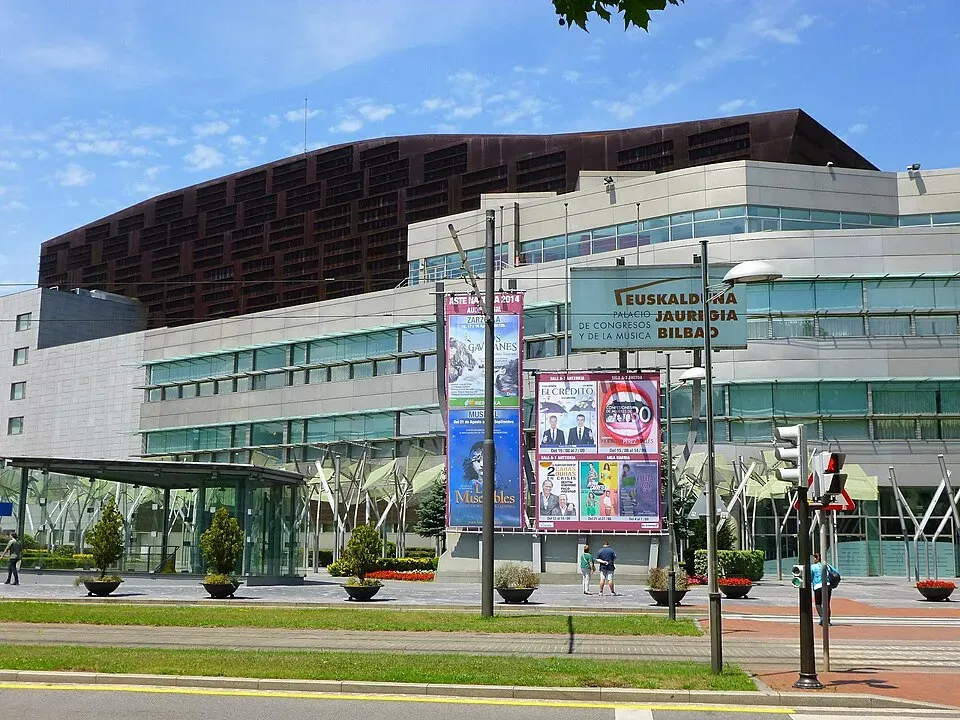The Palacio Euskalduna, formally known as the Euskalduna Conference Centre and Concert Hall, stands as a striking emblem of Bilbao’s post-industrial transformation, its massive Corten steel walls a deliberate nod to the city’s shipbuilding past. Inaugurated on February 19, 1999, this 58,200-square-meter multifunctional complex, designed by architects Federico Soriano and Dolores Palacios, not only serves as a cultural and corporate hub but also showcases how material choices like Corten steel can embody historical narratives while meeting modern architectural demands. Located on the banks of the Estuary of Bilbao, in the Abandoibarra area once occupied by the Euskalduna Shipyard, the building’s use of Corten steel is both a technical and symbolic triumph, reflecting Bilbao’s evolution from an industrial port to a cultural epicenter.

The decision to clad the Palacio Euskalduna in Corten steel—a weathering steel alloy known for its corrosion-resistant properties—was deeply intentional. Soriano and Palacios envisioned the building as a metaphorical vessel, “the last ship built in the dry dock of the former Euskalduna Shipyard,” as noted in descriptions on Viator. Corten steel, with its characteristic rusty patina, was the perfect material to evoke this narrative. Composed of a low-carbon steel alloyed with copper, chromium, and nickel, Corten develops a protective oxide layer when exposed to weather, eliminating the need for painting and reducing maintenance costs. This self-protecting patina, which evolves from a bright orange to a deep reddish-brown over time, mirrors the aging process of the industrial relics that once defined Bilbao’s waterfront, creating a visual dialogue between the city’s past and present.
From a technical perspective, the use of Corten steel in the Palacio Euskalduna aligns with its environmental and functional context. The building’s location beside the Estuary of Bilbao exposes it to a humid, saline environment, where traditional steel would require constant upkeep to prevent corrosion. Corten’s anticorrosive properties, as highlighted by Aceros URSSA, make it an ideal choice for such conditions, with a durability four to eight times higher than common steel, according to INCOPERFIL. The material’s high tensile strength also supports the structural demands of the palace’s massive exterior walls, which enclose a complex that includes Spain’s largest stage (2,164 seats) and second-largest stage, as well as conference facilities for up to 2,200 people. The Corten cladding, paired with glass and concrete, creates a robust envelope that withstands the region’s harsh weather while maintaining an industrial aesthetic that resonates with the site’s history.
The architectural design of the Palacio Euskalduna leverages Corten steel not just for its durability but also for its aesthetic versatility. The material’s textured, weathered surface contrasts with the building’s mosaic-style windows and the sleek glass elements, a combination that Soriano and Palacios used to emphasize light and transparency, as noted on the official Euskalduna website. The roof, designed with inverted V-shaped skylights in a sawtooth pattern, allows natural light to flood the interior, softening the heaviness of the Corten walls and creating a dynamic interplay of light and shadow. This balance of materials—steel, glass, and concrete—reflects a broader trend in late 20th-century architecture, where industrial materials were repurposed for cultural projects, a movement Bilbao embraced during its urban regeneration in the 1990s, following the construction of the nearby Guggenheim Museum.
However, the use of Corten steel in the Palacio Euskalduna is not without its challenges. While the material’s patina protects against further corrosion, it requires careful detailing to prevent runoff staining adjacent surfaces, a common issue with weathering steel. The architects mitigated this by ensuring proper drainage systems, though long-term maintenance records are not publicly detailed. Additionally, Corten’s initial cost can be 20% higher than conventional steel, a factor that may have strained the project’s budget during Bilbao’s economic recovery phase in the late 1990s. Yet, the material’s low maintenance needs and lifespan—potentially exceeding 100 years—justify the investment, especially for a public building expected to endure for generations.
The symbolic weight of Corten steel in the Palacio Euskalduna extends beyond its technical merits. By choosing a material that visually recalls the rusted hulls of ships, Soriano and Palacios embedded the building with a sense of memory, honoring the Euskalduna Shipyard’s role in Bilbao’s industrial growth. This choice resonates with other Corten-clad projects in Spain, such as the CaixaForum Madrid and the Barcelona Botanical Garden, where the material similarly bridges historical and contemporary narratives. The palace’s design earned it the Enric Miralles Award at the 6th Spanish Architecture Biennial in 2001, a testament to its architectural significance, and in 2003, the International Congress Palace Association named it the world’s best congress center, underscoring its functional success.
Today, the Palacio Euskalduna remains a vital cultural hub, hosting the Bilbao Symphony Orchestra, the city’s opera season by ABAO, and a range of events from corporate conferences to temporary exhibitions. Its Corten steel walls, now a deep, earthy brown after 26 years of weathering, stand as a monument to Bilbao’s resilience and reinvention. While the material choice has been celebrated for its symbolic and practical qualities, it also prompts reflection on the broader implications of using industrial materials in cultural architecture. In an era where sustainability is paramount, Corten’s recyclability and low maintenance offer a model for future projects, but its cost and specific detailing requirements remind us that even the most innovative materials demand careful consideration. The Palacio Euskalduna, with its rusted steel skin, continues to tell Bilbao’s story—one of transformation, memory, and enduring strength.
